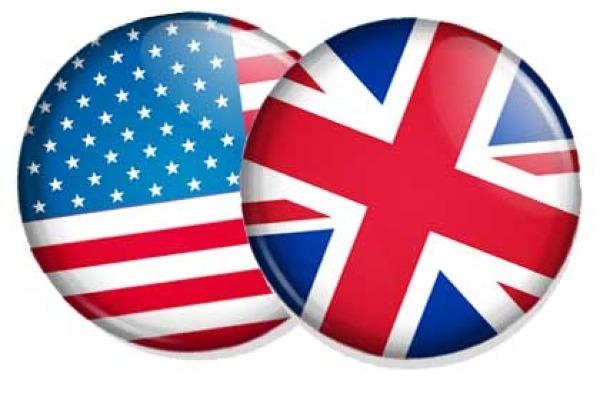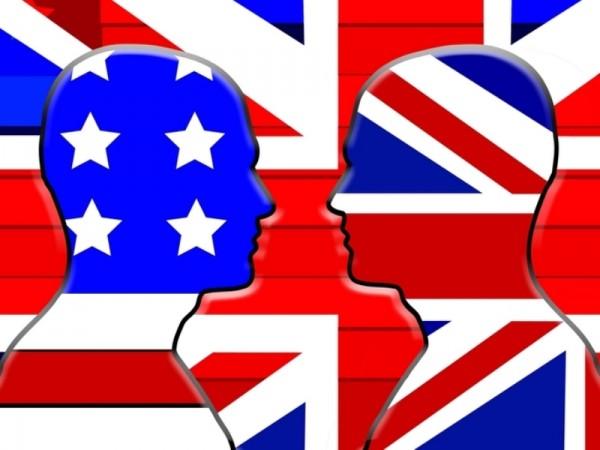
British english and american English
.docxBritish english and American english


This is one of a series of articles about the differences between British English and American English, which, for the purposes of these articles, are defined as follows:
-
British English (BrE) is the form of English used in the United Kingdom. It includes all English dialects used in the United Kingdom.
-
American English (AmE) is the form of English used in the United States. It includes all English dialects used in the United States.
Written forms of British and American English as found in newspapers and textbooks vary little in their essential features, with only occasional noticeable differences in comparable media[1] (comparing American newspapers with British newspapers, for example). This kind of formal English, particularly written English, is often called "standard English".[2][3]
The spoken forms of British English vary considerably, reflecting a long history of dialect development amid isolated populations. In the United Kingdom, dialects, word use and accents vary not only between England, Northern Ireland, Scotland and Wales, but also within them. Received Pronunciation (RP) refers to a way of pronouncing standard English that is actually used by about two percent of the UK population.[4] It remains the accent upon which dictionary pronunciation guides are based, and for teaching English as a foreign language. It is referred to colloquially as "the Queen's English", "Oxford English" and "BBC English", although by no means do all graduates of the university speak with such an accent and the BBC no longer requires it or uses it exclusively.[5]
An unofficial standard for spoken American English has also developed, as a result of mass media and geographic and social mobility, and broadly describes the English typically heard from network newscasters, commonly referred to as non-regional diction, although local newscasters tend toward more parochial forms of speech.[6] Despite this unofficial standard, regional variations of American English have not only persisted but have actually intensified, according to linguist William Labov.[citation needed]
Regional dialects in the United States typically reflect some elements of the language of the main immigrant groups in any particular region of the country, especially in terms of pronunciation and vernacular vocabulary. Scholars have mapped at least four major regional variations of spoken American English: Northern, Southern, Midland, and Western.[7] After the American Civil War, the settlement of the western territories by migrants from the east led to dialect mixing and levelling, so that regional dialects are most strongly differentiated in the eastern parts of the country that were settled earlier. Localized dialects also exist with quite distinct variations, such as in Southern Appalachia and Boston.
British and American English are the reference norms for English as spoken, written, and taught in the rest of the world, excluding countries where English is spoken natively such as Australia, Canada, Ireland and New Zealand. In many former British Empire countries where English is not spoken natively, British English forms are closely followed, alongside numerous AmE usages which have become widespread throughout the Anglosphere.[8][9] Conversely, in many countries historically influenced by the United States where English is not spoken natively, American English forms are closely followed. Many of these countries, while retaining strong BrE or AmE influences, have developed their own unique dialects, which include Indian English and Philippine English.
Chief among other native English dialects are Canadian English and Australian English, which rank third and fourth in the number of native speakers. For the most part, Canadian English, while featuring numerous British forms alongside indigenous Canadianisms, shares vocabulary, phonology and syntax with American English, leading many to recognizeNorth American English as an organic grouping of dialects.[10] Australian English likewise shares many American and British English usages alongside plentiful features unique to Australia, and retains a significantly higher degree of distinctiveness from both the larger varieties than does Canadian English. South African English, New Zealand English and the Hiberno-English of Ireland are also distinctive and rank fifth, sixth and seventh in the number of native speakers.
The English language was first introduced to the Americas by British colonization, beginning in 1607 in Jamestown, Virginia. Similarly, the language spread to numerous other parts of the world as a result of British trade and colonization elsewhere and the spread of the former British Empire, which, by 1921, held sway over a population of 470–570 million people, approximately a quarter of the world's population at that time.
Over the past 400 years the form of the language used in the Americas—especially in the United States—and that used in the United Kingdom have diverged in a few minor ways, leading to the versions now occasionally referred to as American English and British English. Differences between the two include pronunciation, grammar, vocabulary (lexis), spelling, punctuation, idioms, and formatting of dates and numbers, although the differences in written and most spoken grammar structure tend to be much less than those of other aspects of the language in terms of mutual intelligibility. A small number of words have completely different meanings in the two versions or are even unknown or not used in one of the versions. One particular contribution towards formalizing these differences came from Noah Webster, who wrote the first American dictionary (published 1828) with the intention of showing that people in the United States spoke a different dialect from Britain, much like a regional accent.[11]
This divergence between American English and British English has provided opportunities for humorous comment, e.g. George Bernard Shaw has a character say that the United States and United Kingdom are "two countries divided by a common language";[12] and Oscar Wilde that "We have really everything in common with America nowadays, except, of course, the language" (The Canterville Ghost, 1888). Henry Sweet incorrectly predicted in 1877 that within a century American English, Australian English and British English would be mutually unintelligible. It may be the case that increased worldwide communication through radio, television, the Internet and globalization has reduced the tendency towards regional variation. This can result either in some variations becoming extinct (for instance, the wireless, being progressively superseded by the radio) or in the acceptance of wide variations as "perfectly good English" everywhere.
Although spoken American and British English are generally mutually intelligible, there are occasional differences which might cause embarrassment—for example, in American English a rubber is usually interpreted as a condom rather than an eraser;[13] and a British fanny refers to the female pubic area, while the American fanny refers to an ass (US) or an arse (UK). Likewise the Australian root means to have sexual intercourse whilst in both British and American English it means to support someone for success.
